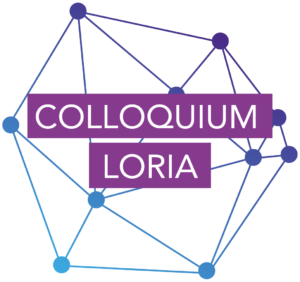[PhD 2022] fits within the scope of the ANR project ‘REFINED
Location: LORIA, équipe MULTISPEECH, Nancy
Supervisors: Romain Serizel (Maître de Conférences, Université de Lorraine), Paul Magron (Chargé de Recherche, INRIA).
This PhD fits within the scope of the ANR project ‘REFINED’ involving the Multispeech research team in (LORIA), Nancy, the Laboratory of Embedded Artificial Intelligence in CEA (List) in Paris, and the Hearing Institute in Paris.
Context
Worldwide, around 466 million people currently suffer from a hearing loss. To remedy the loss of hearing sensitivity, portable hearing aids have been designed for almost a century. Regardless of the recent advances in audio signal processing integrated in current hearing aids models, people suffering from Auditory Neuropathy Spectrum Disorders enjoy little or no benefit from current hearing aids [1]. Contrary to regular hearing losses, Auditory Neuropathy Spectrum Disorders impair the processing of temporal information without necessarily affecting auditory sensitivity. This can have a particularly dramatic impact in scenarios where the speech of interest is present together with some background noise or with one or several concurrent speaker(s).
Current speech enhancement systems are usually trained on generic corpora, and they are designed to optimize some cost between the target (known) speech and the output of the system, which is estimated from the mixture, such as the mean squared error [2] or the speech-to-distortion ratio [3]. The trained system is then evaluated using a criterion that is designed to reflect the speech perception from people without hearing losses [4]. Yet, the main need of subjects with Auditory Neuropathy Spectrum Disorders, shared with ageing subjects who experience central auditory-processing difficulties, is not to restore audibility but to improve their speech intelligibility, particularly in noisy environments, by compensating for the deterioration of acoustic cues that rely on temporal precision [5].
Objectives
Based on clinical studies performed at the Hearing Institute within the project, the main goal of this PhD is to define new cost functions to be optimized by the speech processing algorithms that are more relevant for subjects with Auditory Neuropathy Spectrum Disorders than generic losses used in current algorithms. We will pay particular attention to the algorithms’ ability to help volunteers in scenarios with multiple potential target sources that are spatially distributed in a room. We will derive the speech enhancement filters aiming to extract not only speech, but also additional cues such as speech contour or timbre. In a latter step, the model will be adapted under light human supervision in order to reduce the burden of the usual iterative “handcrafted” adjustments and repeated visits with a specialist clinician to fit the hearing aid to individual needs.
Profile
- Strong background in audio signal processing or machine learning
- Excellent programming skills
- Excellent English writing and speaking skills
Application
Upload your application on ADUM with the following:
- CV
- Cover letter
- Recommendation letter
- M1-M2 note transcript
- Master thesis, if available
References
[1] Berlin, C. I. et al. Multi-site diagnosis and management of 260 patients with auditory neuropathy/dys-synchrony (auditory neuropathy spectrum disorder). Int J Audiol 49, 30-43 (2010).
[2] Doclo, S., Spriet, A., Wouters, J. & Moonen, M. Frequency-domain criterion for the speech distortion weighted multichannel Wiener filter for robust noise reduction. Speech Communication 49, 636-656 (2007).
[3] Luo, Y., et al. FaSNet: Low-latency adaptive beamforming for multi-microphone audio processing. 2019 IEEE automatic speech recognition and understanding workshop (2019).
[4] Vincent, E., Rémi G., and Cédric F. Performance measurement in blind audio source separation. IEEE transactions on audio, speech, and language processing 14.4, 1462-1469 (2006).
[5] https://claritychallenge.github.io/clarity_CC_doc/docs/cpc1/cpc1_intro


